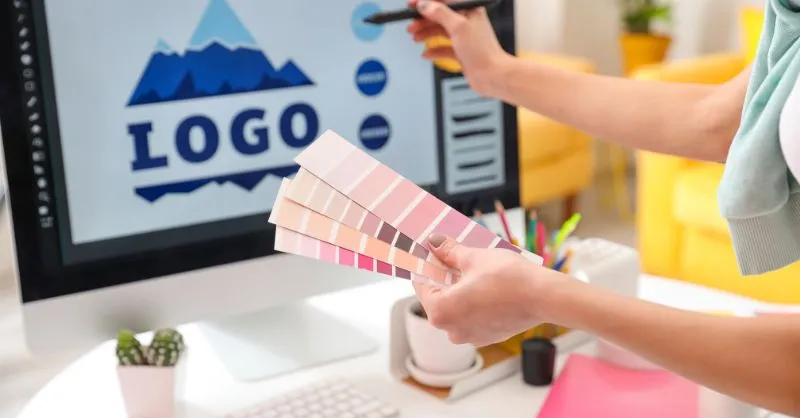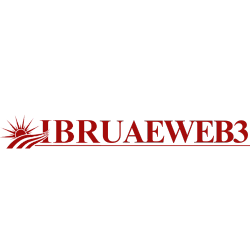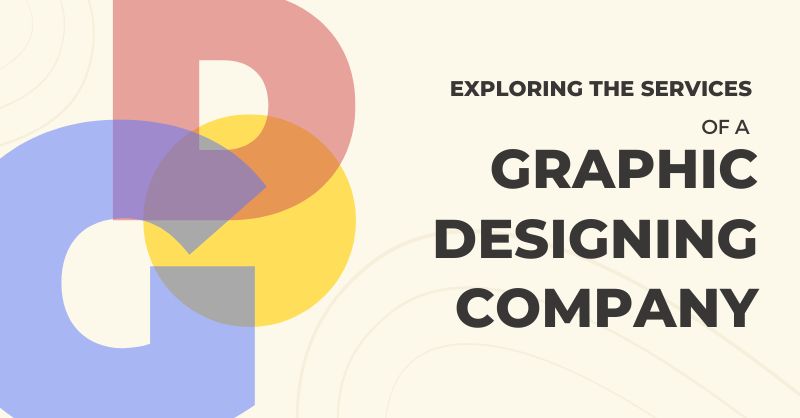Exploring the Services of a Graphic Designing Company

Exploring the Services of a Graphic Design Firm. In the age of visual dominance, first impressions are frequently created with a single glimpse. Undoubtedly, the field of graphic design takes center stage. Graphic design is an art form that encompasses everything from the brand’s logo to the compelling images that accompany digital content. It combines creativity, psychology, and technology. Behind these beautiful visuals is the expertise of a graphic design firm. These services are the foundation of modern marketing and communications strategy.
The Power of Visual Identity
Before getting into the many services provided by graphic design firms, let’s first understand the importance of visual identity. Just like a person’s clothing and manner shape perception, a brand’s visual identity creates a distinct impression.
This identity is expressed through logos, color schemes, typography, and images. Graphic designers are the craftspeople that combine these pieces to create a unified narrative. These efforts create a long-term link between the brand and its audience.
The Collaborative Process
The compelling images and seamless designs are the result of a collaborative process. It entails understanding the client’s vision, researching the target audience, and iterating on concepts. Graphic designers collaborate with clients to refine ideas and collect feedback. These steps will ensure that the finished output is consistent with the brand’s identity and aims.

Services Offered by a Graphic Designing Company
Here are some professional services offered by a graphic design company:
Logo Design:
A logo is a symbol that captures the essence of a brand and serves as the foundation of its visual identity. Graphic design firms specialize in producing logos that reflect a brand’s ideals, elicit emotions, and are memorable. A successful logo is timeless, adaptable, and able to cross cultural and linguistic boundaries.
Branding and Identity:
Beyond logos, graphic designers construct complete brand identities. This includes producing consistent graphic elements for a wide range of platforms, such as business cards, letterheads, packaging, and social media profiles. The goal is to establish a consistent and recognizable presence that resonates with the intended audience.
Print Design:
Despite the digital revolution, print materials are still relevant. Graphic design firms provide services such as brochure design, flyer design, poster design, and more. These materials act as tangible representations of a brand’s message and are critical for physical marketing initiatives.
Web Design:
Websites serve as digital stores. Graphic designers work with web developers to produce visually appealing and user-friendly websites that reflect the brand’s personality and improve the overall user experience.
Digital Graphics:
From social media posts to online advertisements, digital graphics are a staple of modern marketing. Graphic designers create eye-catching visuals that stop scrolling thumbs and encourage engagement.
Packaging Design:
Product packaging serves more than simply as a protective barrier; it also functions as a silent salesperson. Graphic designers create packaging that not only protects the goods but also communicates its unique selling point via visual aesthetics.
Illustration:
Illustrations humanize designs and help them stand out in a sea of stock pictures. Graphic designers who specialize in illustration bring authenticity and creativity to the table.
Motion Graphics
In an age of short attention spans, motion graphics offer a dynamic approach to communicate information. Graphic designers produce engaging and memorable animated images for use in videos, presentations, and social media.
Infographics:
Infographics, which simplify complex data and concepts, are a useful technique for communicating information. Graphic designers convert facts into visually appealing graphics that aid comprehension.
User Interface (UI) and User Experience (UX) Design:
Graphic designers collaborate with UI/UX designers to create interfaces that are visually appealing and intuitive for users. This is crucial for websites, mobile apps, and software.
Innovative Approaches and Evolving Trends
As the world evolves and technology improves, the field of graphic design adapts to new trends and methods. Let’s take a closer look at some of the unique services provided by graphic design firms and the changing environment of this creative industry.
Visual Storytelling:
In an age where content reigns supreme, graphic designers are becoming masters of visual storytelling. They create storylines that extend beyond aesthetics, including emotion, empathy, and relatability into their designs. From generating pictures to accompany stories to constructing interactive visuals to guide users through difficult processes, visual storytelling is a strong tool that connects with audiences on a personal level.
The emergence of AR and VR technologies has provided new opportunities for graphic designers. Graphic designers are now responsible for developing immersive experiences that combine the real and digital worlds. This might include everything from designing AR filters for social media sites to building VR environments for virtual tours and simulations.
Responsive Design:
With the widespread use of smartphones and tablets, responsive design has become crucial. Graphic designers work together with UI/UX professionals to ensure that their designs are adaptive to different screen sizes and devices. This offers a uniform and user-friendly experience across all platforms.
Sustainable Design:
As environmental concerns gain traction, graphic designers are adopting sustainable design methods. This involves employing environmentally friendly materials, reducing waste, and designing designs that convey a brand’s dedication to sustainability. Such designs appeal to environmentally conscious consumers and contribute to a favorable company image.
Minimalism and Maximalism:
Design trends frequently swing between minimalism and maximalism. Maximalism values vibrant colors, elaborate patterns, and plentiful imagery, whereas minimalism emphasizes simplicity, clarity, and whitespace. Graphic designers expertly balance these two extremes, selecting the style that best fits a brand’s identity and message.
Typography Innovation:
Typography is no longer just about selecting a typeface; it has evolved into a design element in its own right. Graphic designers use custom fonts, imaginative typography layouts, and even kinetic typography (moving text) to give depth and distinctiveness to their projects.
Conclusion
The services provided by a graphic design firm are not static. They change in reaction to technological breakthroughs, changing customer behaviours, and new design styles. Graphic designers are more than just artists; they’re strategic strategists who combine creativity and purpose. They consider the psychology of color. Furthermore, consider the impact of visual hierarchy and the interaction of design elements while creating compositions. It will not only attract attention but also effectively transmit messages.
Disclaimer: Above all information is for general reference only and sourced from internet, before making any kind of decision please visit the authorized websites of authorities and service providers.

